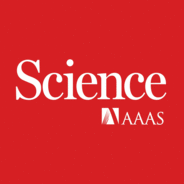On this week’s show: An analog to the Maunder Minimum, when the Sun’s spots largely disappeared 400 years ago, and measuring the energy it takes to chew gum
We have known about our Sun’s spots for centuries, and tracking this activity over time revealed an 11-year solar cycle with predictable highs and lows. But sometimes these cycles just seem to stop, such as in the Maunder Minimum—a 70-year period from 1645 to 1715 with little or no sunspot activity. News Intern Zack Savitsky joins host Sarah Crespi to discuss a nearby star that appears to have entered a similar quiet period, and what we can learn from it about why stars take naps.
Also this week on the show, Adam van Casteren, a postdoctoral researcher in the School of Biological Sciences at the University of Manchester, joins Sarah to talk about measuring how much energy we use to chew up food. Based on the findings, it appears humans have turned out to be superefficient chewers—at least when it comes to the gum used in the study—with less than 1% of daily energy expenditure being spent on mastication.
This week’s episode was produced with help from Podigy.
[Image: NASA/SDO; Music: Jeffrey Cook]
[alt: photo of the largest sunspot from our latest solar cycle with podcast overlay symbol]
Authors: Sarah Crespi; Zack Savitsky
Episode page: https://www.science.org/doi/10.1126/science.ade4241
About the Science Podcast: https://www.science.org/content/page/about-science-podcast
Learn more about your ad choices. Visit megaphone.fm/adchoices

Wissenschaft & Technik
Science Magazine Podcast Folgen
Weekly podcasts from Science Magazine, the world's leading journal of original scientific research, global news, and commentary.
Folgen von Science Magazine Podcast
564 Folgen
-
Folge vom 18.08.2022Monitoring a nearby star’s midlife crisis, and the energetic cost of chewing
-
Folge vom 11.08.2022Cougars caught killing donkeys in Death Valley, and decoding the noseOn this week’s show: Predators may be indirectly protecting Death Valley wetlands, and mapping odorant receptors First up this week on the podcast, News Intern Katherine Irving joins host Sarah Crespi to talk about the first photos of cougars killing feral donkeys in Death Valley National Park. They also discuss the implications for native animals such as big horn sheep, and plans to remove donkeys from the park. Also this week on the show, Paul Feinstein, professor of biology in the department of biological science at Hunter College, discusses a Science Signaling paper on a new approach to matching up smell receptors with smells—a long-standing challenge in olfaction research. This week’s episode was produced with help from Podigy. [Image: Angel Di Bilio/iStock; Music: Jeffrey Cook] [alt: photo of a burro on a hillside near Death Valley with podcast overlay symbol] Authors: Sarah Crespi; Katherine Irving Episode page: https://www.science.org/doi/10.1126/science.ade3366 About the Science Podcast: https://www.science.org/content/page/about-science-podcast Learn more about your ad choices. Visit megaphone.fm/adchoices
-
Folge vom 04.08.2022Invasive grasses get help from fire, and a global map of ant diversityOn this week’s show: A special issue on grass, and revealing hot spots of ant diversity This week’s special issue on grasses mainly focuses on the importance of these plants in climate change, in ecosystems, on land, and in the water. But for the podcast, Contributing Correspondent Warren Cornwall joins host Sarah Crespi to talk about their dark side: invasive grasses that feed fires and transform ecosystems. Also this week on the show, Evan Economo, a professor in the biodiversity and biocomplexity unit at the Okinawa Institute of Science and Technology, joins Sarah to discuss his Science Advances paper on creating a worldwide map of ant diversity. Such maps help us better understand where vertebrate and invertebrate diversity do and don’t overlap and what this means for conservation. If you want to explore the data, you can see them at antmaps.org. This week’s episode was produced with help from Podigy. [Image: NTPFES; Music: Jeffrey Cook] [alt: grassland fire in Northern Australia with podcast symbol overlay] Authors: Sarah Crespi; Warren Cornwall Episode page: https://www.science.org/doi/10.1126/science.ade2512 About the Science Podcast: https://www.science.org/content/page/about-science-podcast Learn more about your ad choices. Visit megaphone.fm/adchoices
-
Folge vom 28.07.2022Probing beyond our Solar System, sea pollinators, and a book on the future of nutritionOn this week’s show: Plans to push a modern space probe beyond the edge of the Solar System, crustaceans that pollinate seaweed, and the latest in our series of author interviews on food, science, and nutrition After visiting the outer planets in the 1980s, the twin Voyager spacecraft have sent back tantalizing clues about the edge of our Solar System and what lies beyond. Though they may have reached the edge of the Solar System or even passed it, the craft lack the instruments to tell us much about the interstellar medium—the space between the stars. Intern Khafia Choudhary talks with Contributing Correspondent Richard Stone about plans to send a modern space probe outside the Solar System and what could be learned from such a mission. Next up on the show, Myriam Valero, a population geneticist at the evolutionary biology and ecology of algae research department at Sorbonne University, talks with host Sarah Crespi about how a little crustacean might help fertilize a species of algae. If the seaweed in the study does use a marine pollinator, it suggests there may have been a much earlier evolutionary start for pollination partnerships. Finally, we have the next in our series on books exploring the science of food and agriculture. This month, host Angela Saini talks with biochemist T. Colin Campbell about his book The Future of Nutrition: An Insider’s Look at the Science, Why We Keep Getting It Wrong, and How to Start Getting It Right. This week’s episode was produced with help from Podigy. [Image: Johns Hopkins APL/Mike Yakovlev; Music: Jeffrey Cook] [alt: illustration of an interstellar probe crossing the boundary of the heliosphere with podcast symbol overlay] Authors: Sarah Crespi; Rich Stone; Angela Saini; Khafia Choudhary ++ LINKS FOR MP3 META Episode page: https://www.science.org/doi/10.1126/science.ade1292 About the Science Podcast: https://www.science.org/content/page/about-science-podcast Learn more about your ad choices. Visit megaphone.fm/adchoices
